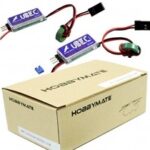The OBDII error code P0108 indicates a problem with your vehicle’s Manifold Absolute Pressure (MAP) sensor circuit. This sensor plays a crucial role in engine performance by measuring the air pressure inside the intake manifold. A P0108 code signifies that the sensor is sending a high voltage signal to the Powertrain Control Module (PCM), indicating a potential issue with the sensor itself or its circuitry. This article will delve into the causes, symptoms, and possible solutions for this common error code.
What Does the P0108 Code Mean?
The MAP sensor measures the difference between the intake manifold pressure and the outside barometric pressure. This information allows the PCM to calculate the air density and adjust the fuel injection and ignition timing accordingly for optimal engine performance and fuel efficiency. A P0108 code, specifically “Manifold Absolute Pressure/Barometric Pressure Circuit High Input,” suggests an abnormally high voltage reading from the MAP sensor circuit. This could be due to a faulty sensor, wiring issues, or even a vacuum leak.
Symptoms of a P0108 Error Code
While the illumination of the check engine light (MIL) is the most obvious sign, other symptoms may accompany a P0108 code:
- Rough Engine Idle: The engine may run unevenly or stall at idle due to incorrect fuel-air mixture.
- Poor Acceleration: Hesitation or sluggishness during acceleration can indicate the engine is not receiving the correct amount of fuel.
- Reduced Fuel Economy: A malfunctioning MAP sensor can lead to inefficient fuel consumption.
- Black Smoke from Exhaust: Excessive fuel in the combustion chamber can result in black smoke emanating from the tailpipe.
- Engine Misfire: In severe cases, the engine may misfire due to the inaccurate air/fuel mixture.
Common Causes of a P0108 Code
Several factors can contribute to a P0108 error code:
- Faulty MAP Sensor: The most common culprit is a malfunctioning MAP sensor that provides inaccurate readings.
- Vacuum Leaks: A leak in the vacuum hose connected to the MAP sensor can disrupt pressure readings.
- Wiring Problems: Damaged, corroded, or loose wiring in the MAP sensor circuit can cause voltage fluctuations.
- Short Circuit: A short circuit in the wiring harness can send a high voltage signal to the PCM.
- PCM Issues: While less common, a faulty PCM can also trigger a P0108 code.
- Low Engine Vacuum: Worn engine components can contribute to low vacuum pressure, affecting MAP sensor readings.
Diagnosing and Fixing a P0108 Code
Diagnosing a P0108 code requires a systematic approach:
- Visual Inspection: Start by visually inspecting the vacuum hoses, wiring, and connectors for any obvious damage or disconnections.
- Compare MAP and Barometric Pressure: Use an OBDII scanner to compare the Key On Engine Off (KOEO) MAP sensor reading with the barometric pressure reading. They should be nearly identical. A significant difference points towards a potential MAP sensor issue.
- Check Voltage Readings: Monitor the MAP sensor voltage with the engine running using a scanner. At idle, the voltage should typically be around 1.5 volts (depending on altitude). High voltage readings at idle can indicate a problem.
- Vacuum Test: If the voltage is high, check the actual engine vacuum with a gauge. Low vacuum can point to mechanical issues within the engine.
- Electrical Tests: Perform continuity and resistance checks on the MAP sensor wiring to rule out shorts or open circuits.
Conclusion
The OBDII error code P0108 indicates a problem within the Manifold Absolute Pressure sensor circuit. By understanding the symptoms, causes, and diagnostic procedures outlined in this article, you can effectively troubleshoot and resolve this issue. However, it’s recommended to consult with a qualified mechanic for accurate diagnosis and repair, especially if you’re not comfortable working on your vehicle’s electrical system. Addressing this issue promptly will ensure optimal engine performance, fuel efficiency, and prevent potential further damage to your vehicle.

